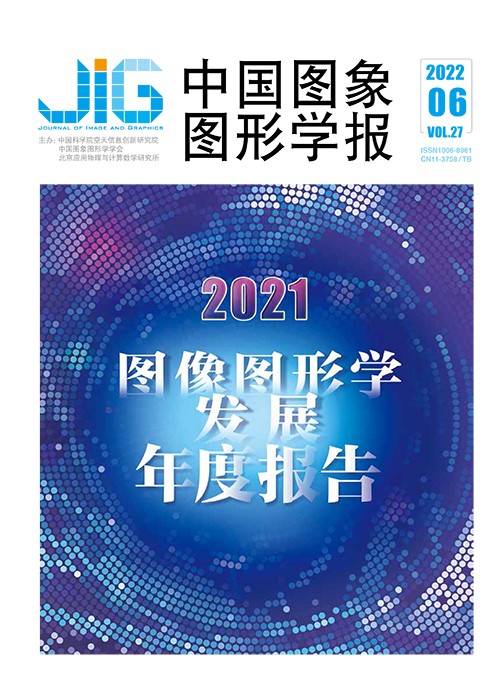
面向智慧交通的图像处理与边缘计算
曹行健1, 张志涛1, 孙彦赞2, 王平1, 徐树公2, 刘富强1,3, 王超1, 彭飞2, 穆世义2, 刘文予4, 杨铀4(1.同济大学电子与信息工程学院, 上海 201804;2.上海大学通信与信息工程学院, 上海 200444;3.同济大学设计创意学院, 上海 200092;4.华中科技大学电子信息与通信学院, 武汉 430074) 摘 要
随着全球人口的持续增长和城市化进程的加速,道路拥挤、交通事故和污染排放增加等问题日益严重。智慧交通系统旨在借助先进的信息与通信技术建成高效安全、环保舒适的交通与运输体系,提供全方位的交通信息服务和安全高效、经济快捷的交通运输与出行服务。经过各国多年来的竭力推进与发展,智慧交通系统在交通管理、自动驾驶与车路协同等方向均得到广泛的应用。智慧交通的发展离不开通信、计算机与控制等研究方向的突破与创新。其中,图像处理作为智慧交通系统的核心技术之一,它的研究进展直接影响着智慧交通系统的部署。图像处理技术是指计算机对图像进行增强、复原、提取特征、分类和分割等技术处理,通过对交通视觉图像的处理,为智慧交通系统的感知、识别、检测、跟踪和路径规划等功能提供了最直接与重要的信息。此外,面对智慧交通系统所产生的大量数据计算任务,边缘计算技术则将中心云服务下沉至各边缘节点附近,不但能够优化算力负载分配,还能够满足智慧交通应用与服务对低时延、高响应速度的需求。本文从智慧交通系统的发展现状入手,分别围绕面向智慧交通的图像处理与边缘计算技术,阐述其研究热点与前沿进展,汇总与比较国内外的相关学术和产业成果,并对智慧交通系统中的图像处理及边缘计算技术未来的发展进行总结分析与趋势展望。
关键词
The review of image processing and edge computing for intelligent transportation system
Cao Xingjian1, Zhang Zhitao1, Sun Yanzan2, Wang Ping1, Xu Shugong2, Liu Fuqiang1,3, Wang Chao1, Peng Fei2, Mu Shiyi2, Liu Wenyu4, Yang You4(1.College of Electronic and Information Engineering, Tongji University, Shanghai 201804, China;2.School of Communication & Information Engineering, Shanghai University, Shanghai 200444, China;3.College of Design and Innovation, Tongji University, Shanghai 200092, China;4.School of Electronic Information and Communications, Huazhong University of Science and Technology, Wuhan 430074, China) Abstract
Current intelligent transportation system (ITS) issue is challenged to improve conventional transportation engineering solutions nowadays. ITS has integrated advanced information and communication technologies (ICTs) into the holistic transportation system for a safe, efficient, comfortable and environment friendly transport ecological construction. A variety of ITS applications and services have emerged in the intelligent traffic management system, autonomous driving system, and cooperative vehicle-infrastructure system (CVIS). To realise the intelligentisation of the traffic management, the intelligent traffic management system is mainly supported by optimised smart traffic facilities. Autonomous driving is mainly based on vehicle intelligence, relying on the cooperation of visual perception, radar perception, positioning system, on-board computing and artificial intelligence. The CVIS depends on the collaborative work of intelligent vehicles, roadside equipment and cloud platforms in support of the internet of vehicles (IOV) to fully implement dynamic real-time information interaction between vehicles and related traffic issues to achieve the vehicle-road collaborative management and traffic safety. Image processing is one of the core technologies that can support the deployment of a large number of ITS applications. It is based on computer algorithms application to extract useful visual sensor data derived information, including image enhancement and restoration, feature extraction and classification, as well as the semantic and instance segmentation. Image enhancement and restoration refers to improve the visual performance of the image and render more suitable image for human or machine analysis to deal with the image quality reduction issues of the challenging traffic system scenarios. Image feature extraction and classification technology is the core of object detection for accurate images or videos derived traffic objects locating and identifying, which is the basis for solving more complex higher-level tasks such as segmentation, scene understanding, object tracking, image description, event detection and activity recognition. To achieve higher-precision environmental perception in ITS, the semantic and instance segmentation realises pixel-level image classification based on scene semantic information in terms of the provision of different labels for instances of the same category. These image processing technologies can illustrate crucial references and information to enhance the capabilities of the perception, recognition, object detection, tracking, and path planning modules for more ITS applications. The multifaceted scenarios integration provides important technical support for intelligent traffic management, autonomous driving and the CVIS. In addition, the wide deployment of sensing devices places tremendous demands on data transmission and processing. As the widely recognised data processing technology, the centralised cloud computing is challenged to meet the real-time requirements of most massive data applications in ITS, which leads to uncertainty and barriers in the transmission process. Differentiated from the centralised cloud computing, the multi-access edge computing (MEC) technology deploys sensing, computation, and storage resources close to the network edge and provide a low-latency response-based platform for ITS, high bandwidth, and real-time applications and services access to network information. Our research reviews the current development status and typical applications of ITS. We focus on current image processing and MEC technologies for ITS. Future research direction of ITS and its related image processing and MEC technologies are predicted.
Keywords
intelligent transportation system(ITS) image processing edge computing autonomous driving cooperative vehicle-infrastructure system(CVIS) deep learning
|



 中国图象图形学报 │ 京ICP备05080539号-4 │ 本系统由
中国图象图形学报 │ 京ICP备05080539号-4 │ 本系统由